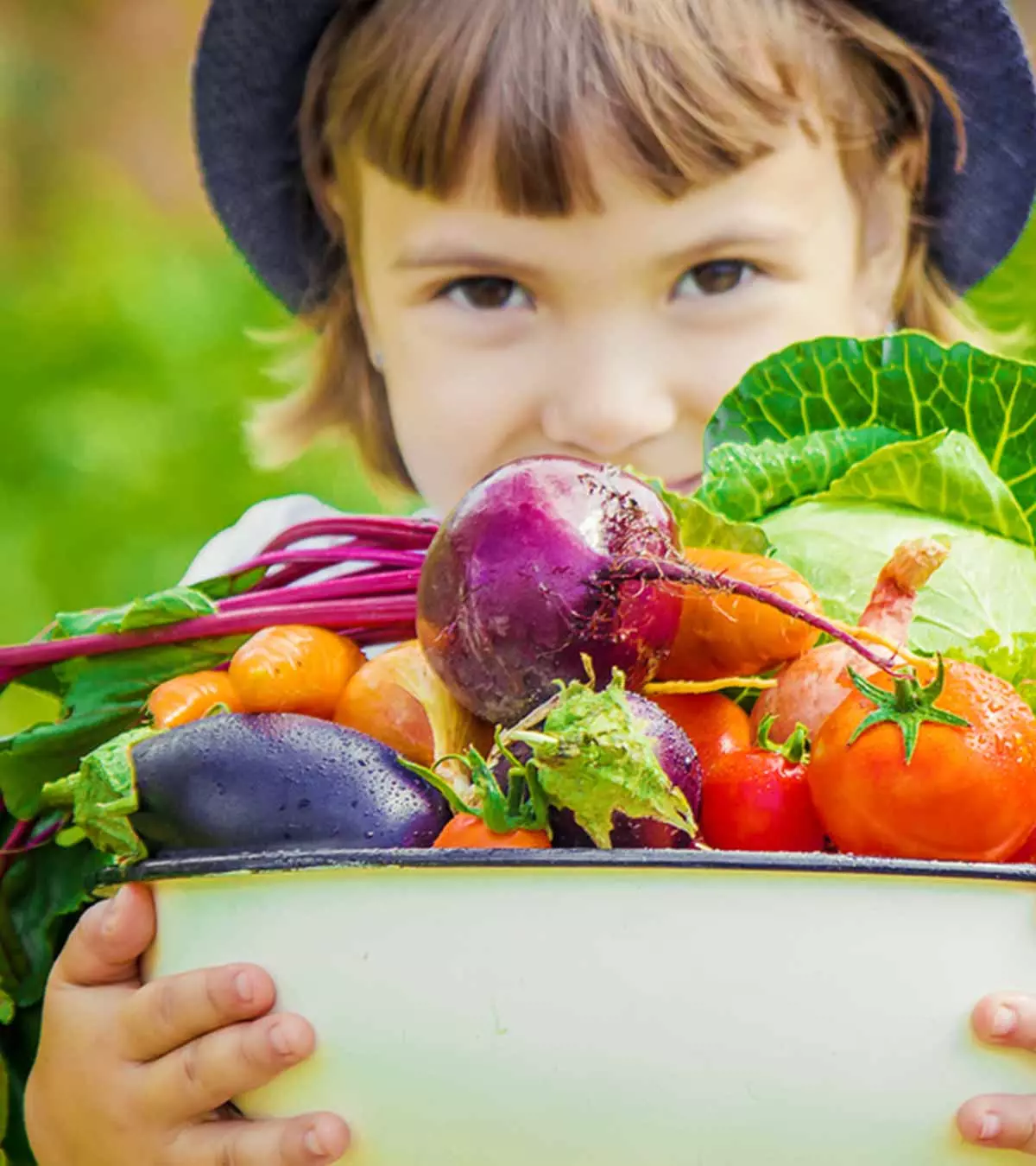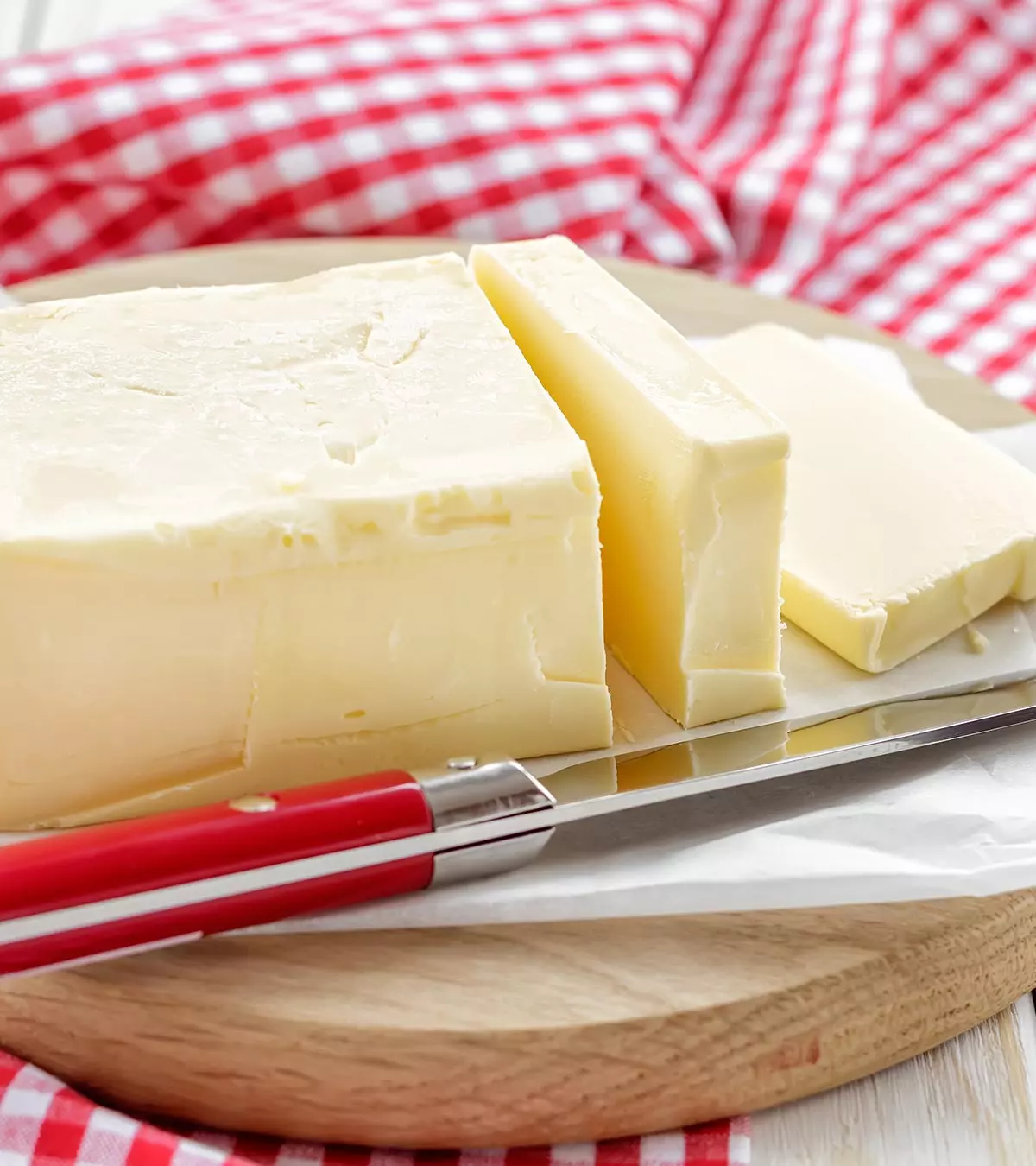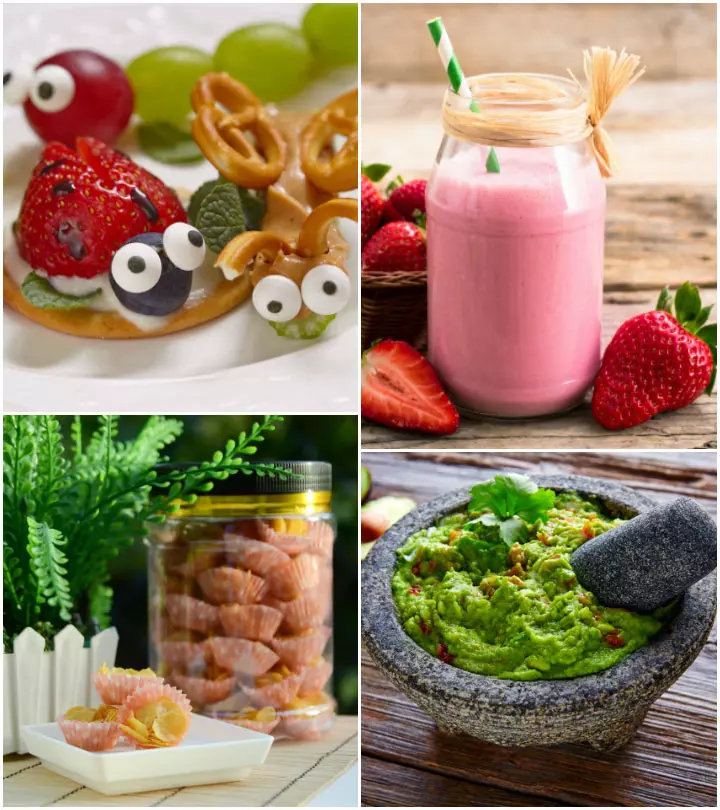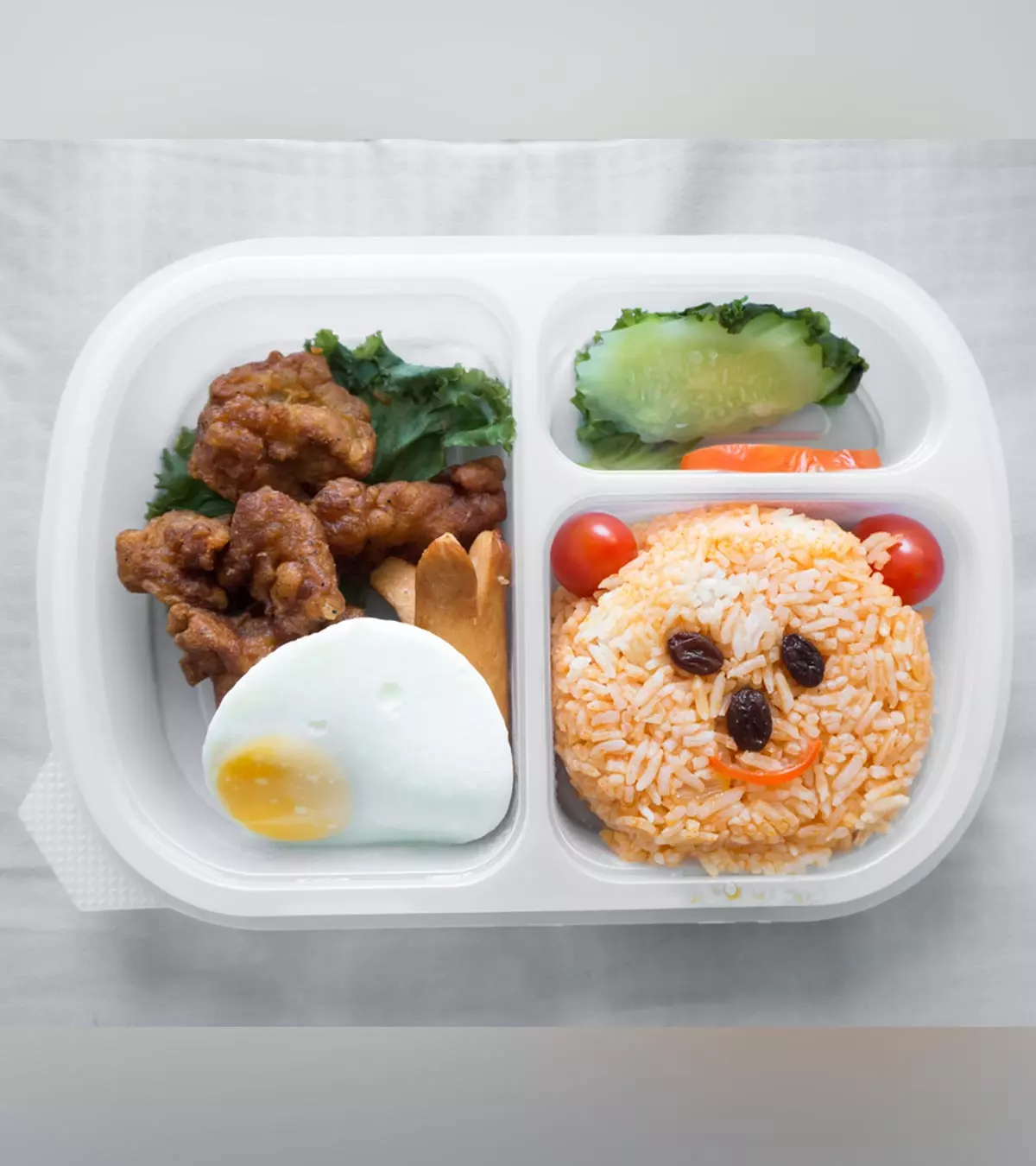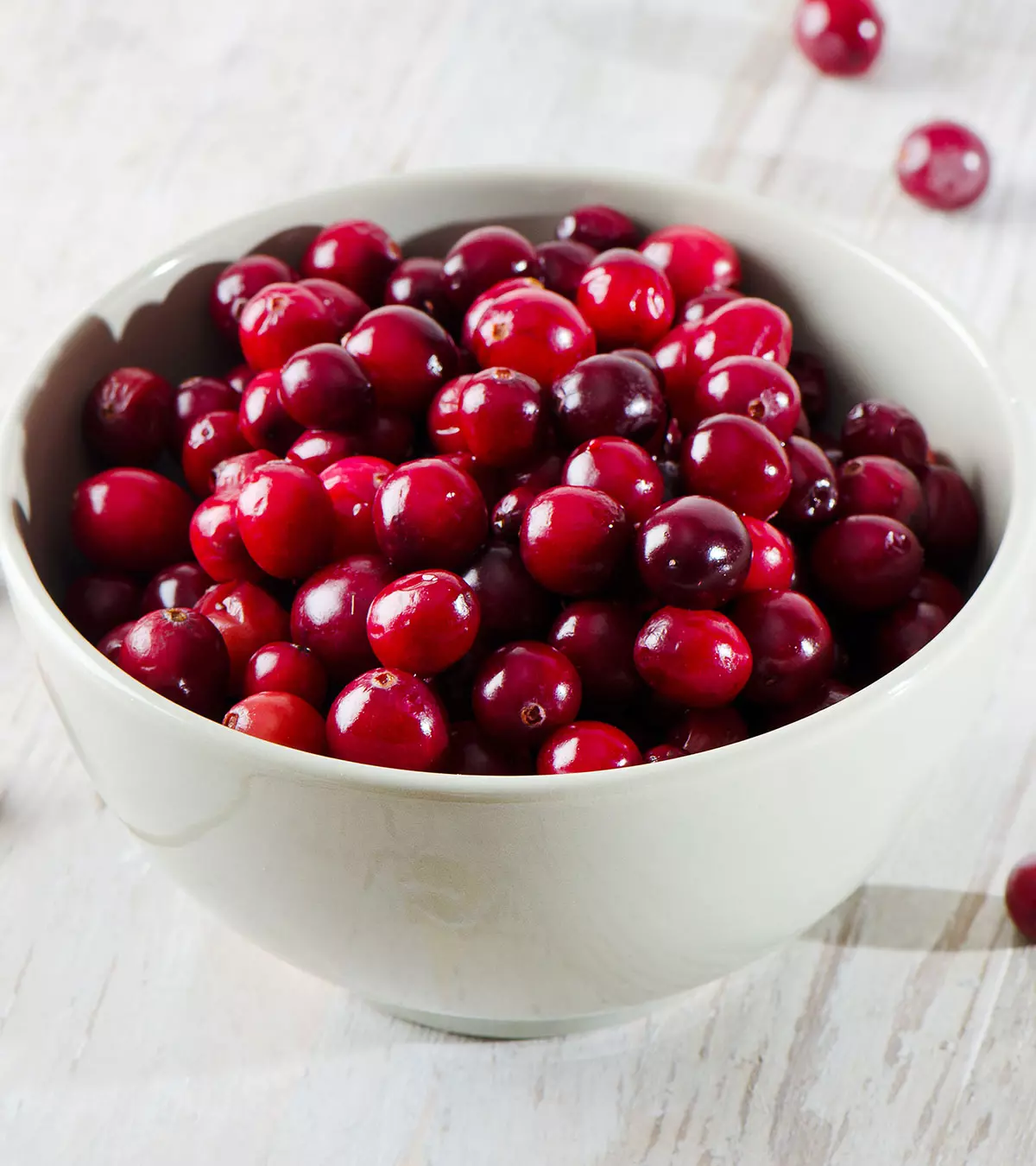
Image: Shutterstock
Cranberries are small, round, sour berries from North America that are holiday must-haves. The benefits of cranberries for kids are numerous since they are packed with many nutrients necessary for healthy growth and development. In addition, this superfood has several beneficial properties that help resolve many health issues, maintain dental health, manage obesity, and prevent urinary tract infections (UTI).
Hence, if you are considering including cranberries in your child’s meals and are curious whether they are good for their health, continue reading. This post will tell you more about cranberries, including their benefits for children, uses, and some cases where they are not recommended for children.
Key Pointers
- Cranberries can help prevent cardiovascular illnesses by lowering blood pressure in children.
- Consumption of cranberries aids in preventing obesity and urinary tract infections.
- Blending cranberries into smoothies or using dried, frozen, or fresh cranberries are ideal for children.
- Overconsumption of cranberries might cause upset stomach, diarrhea, and kidney stone development in children.
- Children using blood-thinning medicine shouldn’t consume excessive cranberries.
Benefits Of Cranberries For Kids
Cranberries can be part of a healthy diet for kids. Some of the benefits of introducing cranberry to kids include:
1. Nutritionally Rich Fruit
North Americans recognized the nutritional properties of cranberries well before science. They used the berry to cure blood poisoning and stop bleeding. Sailors would eat these red berries during the international voyages to keep scurvy at bay. A ½ cup serving of cranberry will provide your child with 10% of his daily value of vitamin C. It is also rich in minerals like copper, manganese, and potassium.
2. Rich In Antioxidants

Image: Shutterstock
Cranberry is an antioxidant-rich fruit. It contains antioxidants like proanthocyanidins, flavonoids, and vitamin A. These compounds help reduce oxidative damage and strengthen the immune system. Proanthocyanidins also kill the bacteria that stick to the inside of the body. Now that’s one powerful punch for a tiny berry.
 Nutrition fact
Nutrition fact3. Prevents Cardiovascular Diseases
The polyphenols in cranberries will reduce the risk of cardiovascular diseases. It prevents the platelet build up and reduces blood pressure via the anti-inflammatory mechanism.
4. Prevents Urinary Tract Infections
Cranberries are popular for treating and preventing urinary tract infections in adults. Cranberries help flush out E. coli bacteria out of the bladder, thereby preventing urinary tract infection.
5. Dental Health

Image: Shutterstock
Children aren’t always the best when it comes to dental health, but including cranberries in their diet can help with this problem too. Nothing compares to good brushing habits and reducing sugary drinks and foods, but according to the researchers, cranberries have the therapeutic potential to work on periodontitis and caries (1).
6. Controls Obesity
Obesity is one of the most common health conditions in children. Diets higher in fiber have been shown to reduce the risk of obesity in your kids (2). Cranberries are a good source of fiber, which can also benefit his digestive system.
 Be watchful
Be watchfulUses
A great thing about cranberries is that they come in a myriad of forms. So you can easily incorporate the berry into your child’s meals. Here are some ways to add cranberries to your kid’s diet.
- Dried Cranberries:
Toss some dried cranberries into a trail mix for an after school snack. Sprinkle some dried cranberries over a salad for some sweetness. Top your child’s fiber-packed cereals with dried cranberries. It will change the texture and will keep your child energized throughout the day. A word of caution: dried fruits can stick to your children’s teeth, promoting tooth decay, and so they are best mixed with other food. Hard, small food items like dried cranberries can present a choking hazard to young children and should be mixed with other food for those under 5.
- Frozen Cranberries:
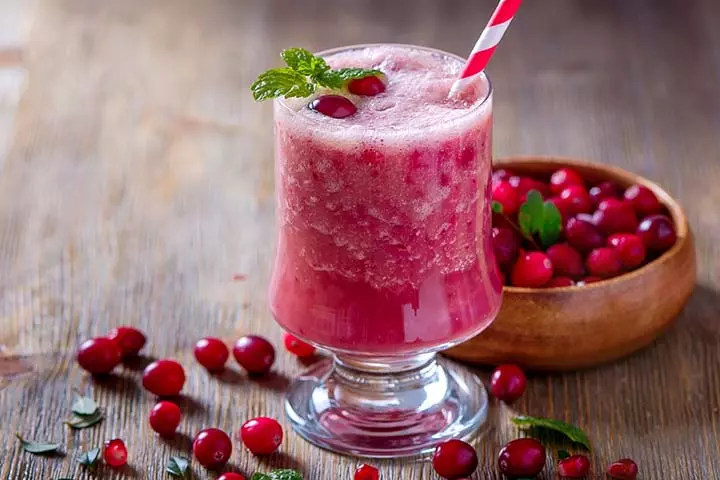
Image: Shutterstock
Blend the tart berry with banana and yogurt to make a healthy, hearty smoothie. Stuff baked apples with cinnamon and cranberries for a warm treat on a winter evening. Stir in some fresh cranberries into a seasonal sauce. Your child can indulge in it throughout the year. Mix some cranberries into pancakes and bran muffin batter to give an antioxidant punch to your breakfast. You can also pair cranberries with orange for a tangy twist in muffins.
Julie, a mother, shares reasons why using frozen whole cranberries is a good choice for making muffins. She says, “I put the cranberries into the batter right from the freezer, which does three things: It keeps the muffins from turning pink and becoming ‘wet,’ which can happen when mixing soft, fresh fruit into batter. It hardens the batter a little, making it easier to scoop into the molds. The frozen berries are shocked by the hot oven temp, which makes (some) of the cranberries explode into the batter while cooking -yummy (i)!”
 Quick tip
Quick tipA Word Of Caution
Do not give cranberries to your child if he is taking blood-thinning medication. Several studies show that cranberries can enhance the effect of blood-thinning drugs on the body, which can also lead to bleeding in extreme cases. Excessive consumption of cranberries can also increase urinary oxalate excretion, which could promote the formation of kidney stones, even in children.
Frequently Asked Questions
1. Are uncooked cranberries poisonous for kids?
No. Uncooked or raw cranberries are not poisonous and can be given to children as fresh cranberry juice. However, due to their extremely sour flavor, raw cranberries are not preferred for consumption (3).
2. What happens if children drink cranberry juice every day?
Drinking cranberry juice daily has no known harmful effects, but it is best to serve it to children in moderation. Pure cranberry juice tastes sour, and large amounts of refined sugar are frequently added to it (3). As a result, daily cranberry juice consumption in children may result in excessive sugar consumption, which is not healthy (4).
3. How much cranberry juice should kids drink to reap its health benefits?
Toddlers aged one to three can have four ounces (half a cup) of juice daily (8).
4. How do cranberries benefit brain development in children?
The results of a study suggest that daily cranberry supplementation, equivalent to 1 small cup of cranberries, for 12 weeks can improve episodic memory and neural functioning in older adults (9). However, adequate research on cranberries’ effect on children’s brain development is unavailable.
5. Are there any tips for selecting and storing fresh cranberries for children?
When buying fresh cranberries for children, look for big, firm berries with a deep red color. Avoid cranberries with brown spots or shriveled skin. Refrigerate them in a tightly sealed container for up to two months, or freeze them for longer storage (7).
6. How to introduce cranberries to picky eaters?
You can encourage children to try cranberries by mixing them with their favorite snacks, adding them to smoothies, or using them in other recipes. Sprinkling dried cranberries on salads or making cranberry sauce or jam to spread on toast are also great ideas.
Blended into your child’s favorite recipes and beverages or eaten in dry form, Cranberries for kids have various advantages owing to their enriched nutritional content and high antioxidant properties. They are counted among the most healthy foods for kids. Its regulated consumption can help your kid grow and develop healthily and also reduce the risk of cardiac disease, urinary infections, obesity, and dental problems. However, excessive intake should be avoided, and it should not be given to children who are on blood-thinning medication.
Infographic: Quick And Easy Cranberry Snack Recipes For Children
Cranberries are sweet, sour, and nutritious. Cooking with cranberries is joyful; you can incorporate their distinct flavor in dishes in simple ways. To help you with that, the infographic below highlights ways to prepare delicious and easy treats for your children. Illustration: Momjunction Design Team
Illustration: Amazing Health Benefits Of Cranberries For Kids
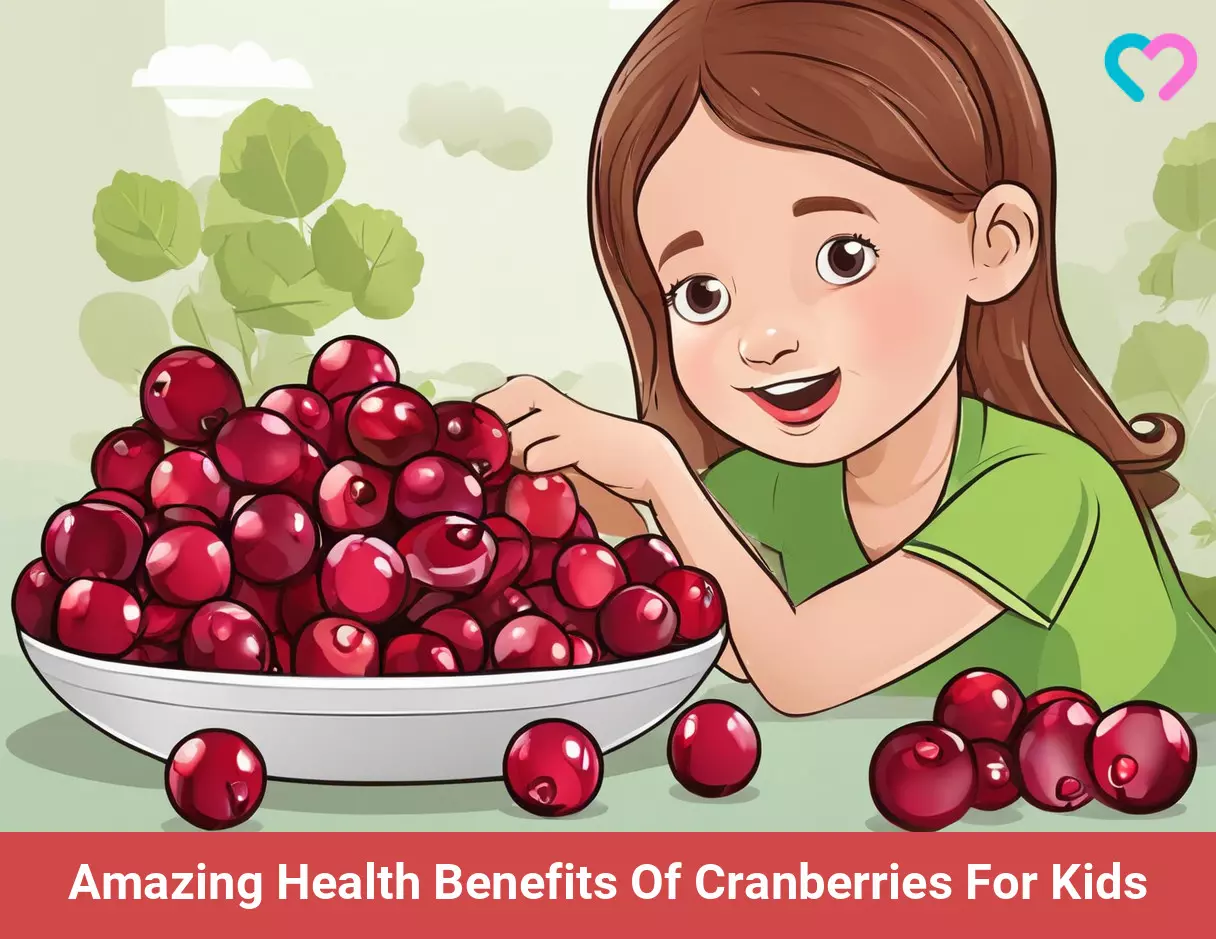
Image: Stable Diffusion/MomJunction Design Team
Delve into the fascinating process of how cranberries are grown and harvested. Take a glimpse at the unique environment they need to thrive in this vibrant and informative video.
Personal Experience: Source
MomJunction articles include first-hand experiences to provide you with better insights through real-life narratives. Here are the sources of personal accounts referenced in this article.
i. Cranberry & chocolate chip muffins;https://julieloveshome.wordpress.com/2013/02/05/cranberry-chocolate-chip-muffins/
References
- M Mukherjee P Bandyopadhyay and D Kundu; Exploring the role of cranberry polyphenols in periodontitis: A brief review; Journal of Indian Society of Periodontitis (2014);
https://www.ncbi.nlm.nih.gov/pmc/articles/PMC4033875/ - M Brauchla et al.; Sources of Dietary Fiber and the Association of Fiber Intake with Childhood Obesity Risk (in 2–18 Year Olds) and Diabetes Risk of Adolescents 12–18 Year Olds: NHANES 2003–2006; Journal of Nutrition and Metabolism (2012);
https://www.ncbi.nlm.nih.gov/pmc/articles/PMC3432551/ - Cranberry.
https://www.mountsinai.org/health-library/herb/cranberry - Trisha Korioth; Added sugar in kids’ diets: How much is too much?; American Academy of Paediatrics(2019).
https://publications.aap.org/aapnews/news/7331?autologincheck=redirected - Cranberries, dried.
https://fdc.nal.usda.gov/fdc-app.html#/food-details/1102630/nutrients - Cranberry.
https://www.nccih.nih.gov/health/cranberry - Tips for Getting Creative with Cranberries.
https://food.unl.edu/newsletter/healthy-bites/tips-getting-creative-cranberries/// - Fruit Juice and Your Child’s Diet.
https://www.healthychildren.org/English/healthy-living/nutrition/Pages/Fruit-Juice-and-Your-Childs-Diet.aspx - Flanagan, Emma et al.; Chronic Consumption of Cranberries (Vaccinium macrocarpon) for 12 Weeks Improves Episodic Memory and Regional Brain Perfusion in Healthy Older Adults: A Randomised, Placebo-Controlled, Parallel-Groups Feasibility Study (2022);
https://pubmed.ncbi.nlm.nih.gov/35662954/
Community Experiences
Join the conversation and become a part of our nurturing community! Share your stories, experiences, and insights to connect with fellow parents.
Read full bio of Dr. Elizabeth Roberts
Read full bio of Sindusha MS
Read full bio of Swati Patwal
Read full bio of Shinta Liz Sunny











